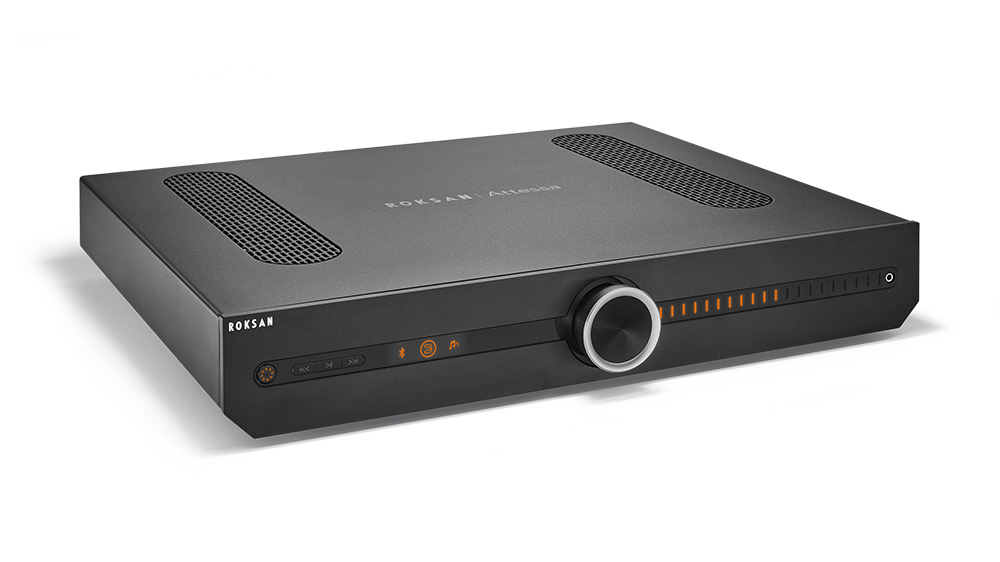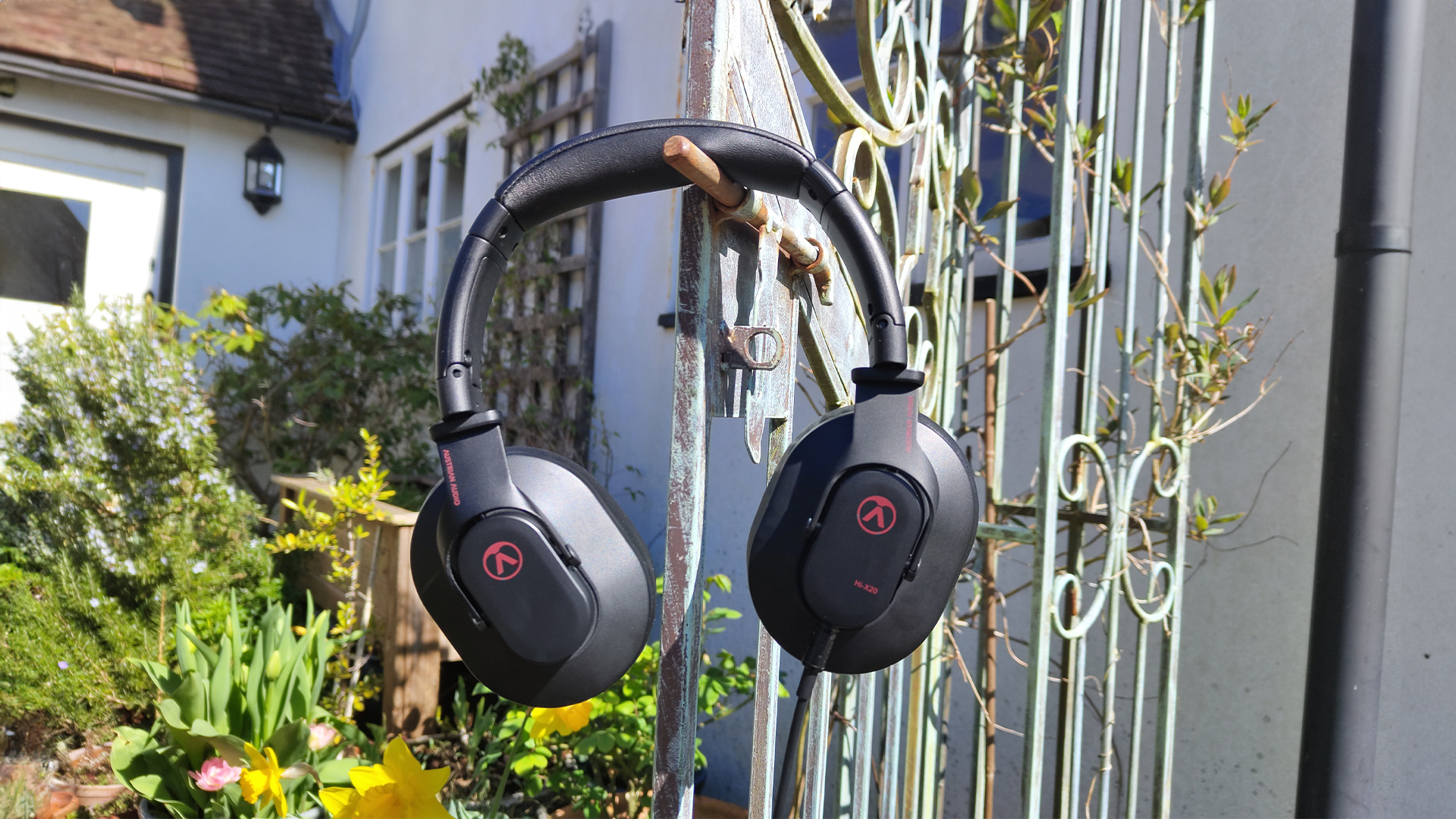What Hi-Fi? Verdict
We like the look, we love all of the features, and we are entranced by the sound. We are impressed too by the retail price. Put that all together and we can tell you that the Roksan Attessa represents real value for money.
Pros
- +
Rich, powerful sound
- +
BluOS streaming
- +
Feature-rich flexibility
Cons
- -
We would have preferred a 6.35mm headphone socket size
Why you can trust What Hi-Fi?
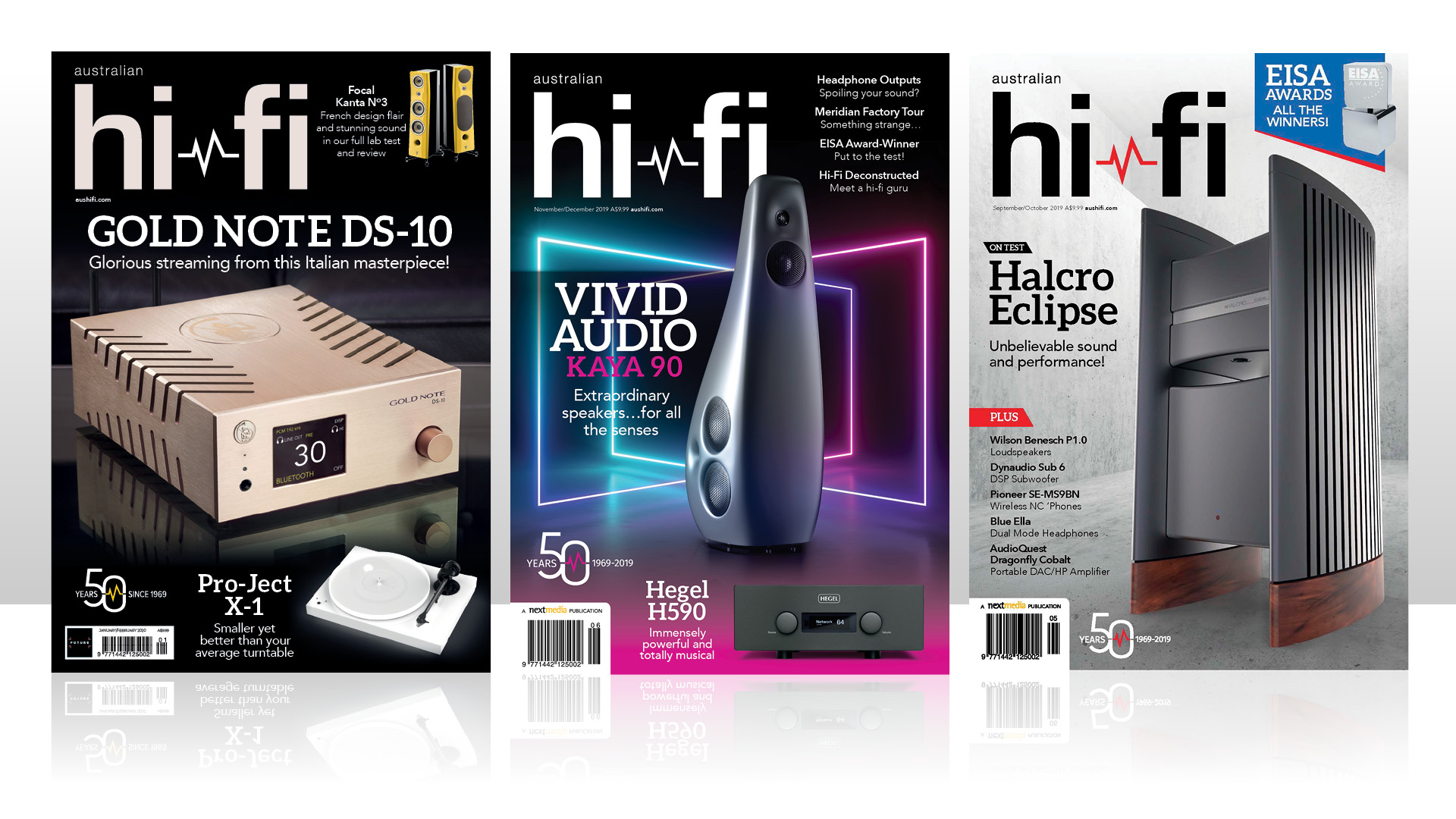
This review and test originally appeared in Australian Hi-Fi magazine, one of What Hi-Fi?’s sister titles from Down Under. Click here for more information about Australian Hi-Fi, including links to buy individual digital editions and details on how best to subscribe. Read What Hi-Fi?'s global, star-rated Roksan Atessa Streaming Amplifier review.
Roksan’s Attessa streaming amplifier is the company’s first integrated amp to feature a DAC with a network/streaming capability and is said to be a completely ‘in-house’ design. It’s also able to be operated from your phone (or device) using an app called MaestroUnite, which not only allows remote control of the Attessa’s many built-in features – including input configuration, headphone socket output voltage, analogue input gain, channel balance, and low-power standby mode – but also allows you to link to other Roksan components, such as its companion Attessa CD transport, as well as access additional options such as firmware updates when they become available.
Roksan also makes the Attessa available as a standard integrated amplifier (sans the streaming capability), plus there’s also an Attessa turntable available. It’s a pretty comprehensive range.
Build & design
As you can see for yourself, the Attessa is a great-looking component, with an ultra-modern design aesthetic. This is not surprising, because Roksan has long been renowned for its designs, most of which were created by industrial designer John Cornock, who was behind the look of the Radius turntable, the DP1 CD transport and the range of ROK amplifiers. This Attessa amplifier was actually designed in-house by Monitor Audio Group R&D, led by its Product Design Director, Charles Minett, alongside Electronics Design Director Jon Green (who incidentally has had a large hand in most Naim electronics over the last decade). The Attessa has its otherwise rectangular chassis cut away at a 45-degree angle on both sides at the bottom, and a single rotary control at the centre of the front panel that, visually, seems to be the body of a bird with slim black ‘wings’ extending either side.
After the Attessa is powered up, the ‘wing’ on the right side of the rotary control becomes sliced with twenty vertically-orientated orange-coloured OLEDs that give an indication of volume level, whilst on the left, the ‘wing’ has icons that illuminate to indicate input source selection, Bluetooth status and BluOS status.
The BluOS OLED icon is a veritable ‘Christmas Tree’ of status indicators! If it’s solid green, the Attessa is in ‘Hotspot’ mode and ready to be connected to a network. If, on the other hand, it’s flashing green, the player is attempting to connect wirelessly to a network or the network cable is disconnected. If the icon is solid blue, the Attessa is connected to your network and ready to stream music. And if the icon is blue, but flickering, the Attessa is in the process of receiving infrared signals from the remote (about which more later). If, on the other hand, the icon is blue but blinking, this means that the Attessa’s output is muted.
A solid white icon indicates that the Attessa is in the process of indexing the local music library on your network, though if it’s alternating between white and blue, it’s replicating or receiving an updated Index from another BluOS device on your network. A solid red icon indicates that the Attessa is waiting to perform an upgrade, while an alternating red/green icon means that the Attessa is in the middle of automatically upgrading its BluOS firmware. Lastly, a solid purple icon indicates the Attessa has timed out after 15 minutes in ‘Hotspot’ mode and so is not yet set up. Phew.
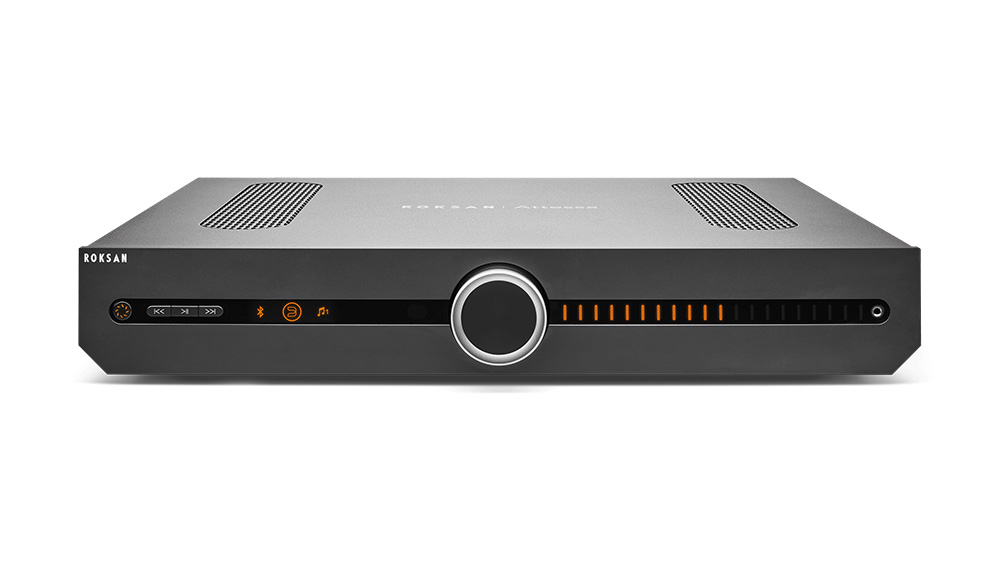
Features
As you should have gathered from the previous paragraph, the Attessa’s streaming capability is enabled by a BluOS streaming module, so you’re getting proven technology. BluOS was originally developed more than a decade ago by Canadian company Lenbrook (which owns NAD, Bluesound and PSB Loudspeakers). In addition to using BluOS in its own brands’ streaming components, the company is now licensing it for use by other hi-fi manufacturers including Dali, Cyrus and Peachtree. BluOS is an operating system/music management system that allows you to access and stream lossless music up to 24-bit/192kHz via your home network. It is compatible with MacOS, Windows, Android and iOS and integrates seamlessly with most streaming services – Tidal, Qobuz, Deezer and Amazon HD. It also supports Spotify Connect and Tidal Connect for those who prefer to control playback directly from those services’ own apps.
As for the BluOS module itself, Bluesound provides two different pre-built modules (NPM-2i and NBM-3i) that enable licensees such as Roksan to easily and cost-effectively integrate the platform into their designs. The module used in the Attessa is the NPM-2i, which has a 1GHz ARM Cortex A9 processor. The primary differences between the two modules are that the NBM-3i has the higher-specced processor necessary to run Roon and features built-in wi-fi, whereas the NPM-2i requires an external USB ‘dongle’ in order to connect via wi-fi. This dongle is supplied as a standard accessory with the Attessa. Both modules support Apple AirPlay 2.
To the far left of the ‘wing’ is a group of three physical buttons that can be used for play/standby, next/previous track access in the event that it’s easier to do this via the front panel than via the infrared remote or your device, plus at the extreme left is a physical power standby button. The Attessa has both a ‘standard’ standby mode and a ‘Standby Plus’ mode. The latter enables the MaestroUnite app to turn the Attessa on from standby and share its status while in standby, as well as allow auto-signal sensing switch-on for the A2 input. It also enables the Attessa to be BluOS visible on the network and wakeable from standby by BluOS.
The only penalty for all of this flexibility is that the ‘Standby Plus’ mode consumes more power than the regular one. You can toggle between the two standby modes by pressing the play/pause button on the remote or via the MaestroUnite app. By default, the Attessa will automatically go into whatever standby mode you have selected if there has been no audio signal received for 20 minutes. You can, however, switch this ‘Auto Standby’ feature off, which will force the Attessa to remain on permanently.
At the far right of the right-most ‘wing’ is a 3.5mm headphone socket. We are not great fans of these, because the design is a compromise that was thought to be necessary in order to fit headphone sockets to portable devices. We would have preferred a full-sized 6.35mm headphone socket. No doubt Cornock had his reasons. The output voltage of this socket is variable between ‘Low’, ‘Mid’ and ‘High’ to help compensate for the different efficiencies of differently designed earphones and headphones.
Roksan suggests you use ‘Low’ for earbud designs and either ‘Mid’ or ‘High’ for over-ear headphones. The intention of the circuit is to help provide the same volume level when using the headphones as you hear when listening via your loudspeakers. Amplifier gain is reduced automatically whenever headphones are connected, and restored automatically whenever headphones are removed. Sensitivity is adjusted by pressing the play/pause button on the infrared remote or via the MaestroUnite app.
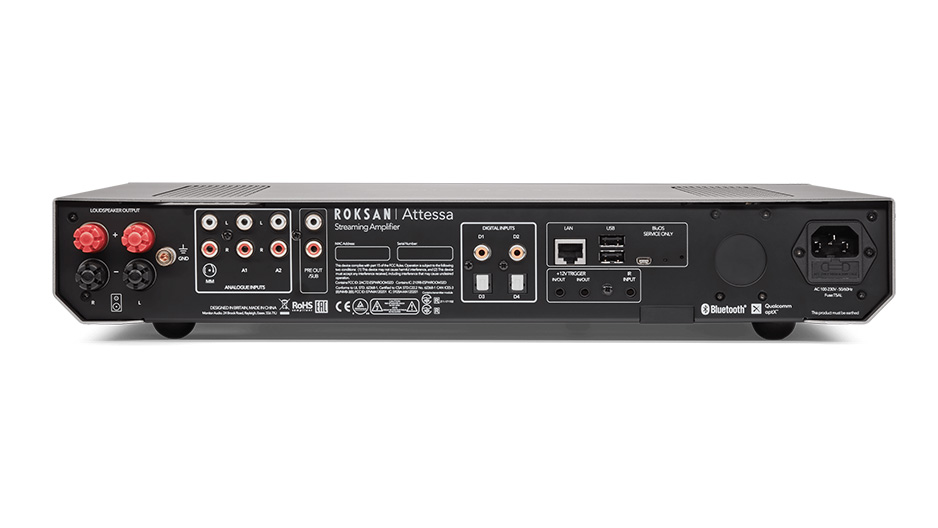
The central rotary control’s main function is to control volume, including to instantly mute the output (a quick press), but it can also be used to select the signal source, which is achieved by pressing it inwards and then rotating clockwise or anticlockwise. There are no ‘indents’ as such to indicate when a specific source is selected; instead you get what Roksan calls ‘haptic feedback’: a type of vibration. It’s very high-tech! Of course, you can also select input source via the remote that is supplied (not an optional extra, as with some manufacturers!) or via the app. Our remote was supplied with some very ordinary non-leak-proof batteries. We would suggest you ditch these and replace them with high-quality leak-proof Lithium batteries instead.
Analogue input one (A1) is the default input whenever the unit is powered up from ‘off’, otherwise the amplifier will default to whatever input you were using prior to it going into standby mode. There are two line-level analogue inputs (A1, A2), a phono input, four digital inputs (D1/CD, D2, D3, and D4), Bluetooth, and BluOS. In BluOS mode, you have an additional three preset options so that you can quickly access your preferred online music services. The A2 input can be reconfigured as an AV input that bypasses the volume control should you wish to use the Attessa in a multi-channel system. If you set A2 for this mode, the three vertical OLED bars closest to the headphone socket in the volume level display will illuminate whenever A2 is selected.
The sensitivity of the three analogue inputs can be adjusted between ‘Low’, ‘Mid’, and ‘High’. For the two line-level inputs, Roksan suggests using the ‘Low’ setting when the component you’re connecting has a nominal output voltage of around 3 volts, ‘Mid’ when it’s around 1.5V, and ‘High’ when it’s around 750mV. The factory default setting is ‘Low’. We would have preferred that the default level be ‘Mid’, but of course you can easily change the default yourself.
The phono stage also has three sensitivity adjustments, but they’re all for moving-magnet cartridges, and the load is set for this cartridge type (47kΩ/56pF). For phono, the default gain setting is ‘Mid’ which Roksan says is the best setting for phono cartridges with a maximum output voltage of around 6mV, such as its own Roksan Corus 2 or Dana cartridges. The ‘Low’ setting is intended for use with cartridges that have a maximum output level of around 12mV, while ‘High’ is for those with a maximum output of 3mV. Again, you can change these settings by pressing the play/pause button on the remote or with the app.
The rear panel of the Attessa shows that two of the digital inputs are wired accessed via RCA terminals while two are optical and so accessed via Toslink connectors (full marks to Roksan for using sockets with protective covers). The wired inputs can accommodate PCM files up to 24-bit/192kHz; the optical types up to 24-bit/96kHz. All of the usual digital formats are catered for.
There are also two USB inputs. One is for use with the aforementioned wi-fi dongle; the other can be used to connect a USB stick with music files, or an external HDD or SSD. In both cases, you can only access the music on the drive via
the BluOS app.
The three analogue inputs are all accessed via gold-plated RCA terminal pairs. The fourth RCA terminal pair is a preamplifier output, should you wish to use a more powerful power amplifier in conjunction with the Attessa. If you don’t use the pre-outs for this purpose, you could connect a powered subwoofer.

Below the analogue inputs you can see that although the Attessa was designed and engineered in the UK, it is built in China.
The speaker terminals are not only very closely spaced, but three of them are also very close to the edge of the chassis cover, which protrudes over the rear panel. This all makes it a bit difficult to connect speaker wires, so we would suggest you remove the small plastic inserts in the centre of these terminals and use banana plugs rather than bare wires, spades or pins. The speaker terminals are on standard 19mm centres, so you could use dual Pomona plugs, as opposed to banana plugs, to make things even easier.
If you decide not to use banana plugs or dual Pomona plugs, be very careful when connecting wires, because we found it so difficult that we accidentally short-circuited the outputs when doing this (we know, we know... we shouldn’t have been doing it with the amplifier switched on!) We rather expected that the Attessa’s built-in over-current output stage protection would cut in when this happened, but there were no symbols on the front panel to indicate this had happened (a loudspeaker icon alongside an icon with an exclamation mark inside a triangle) – just a non-functioning output stage.
It turned out that an internal 6.3A slow-blow fuse had gone open-circuit to protect the output transistors. In the process of fixing this, we found that the Attessa has a conventional Class AB output stage, with two pairs of output transistors per channel. Rather unusually, these transistors are not identified in any way, either on the devices themselves or on the PCB, so you’d have no way of knowing what to replace them with in the event they failed instead of their protective fuses.
The Attessa also has in-built protection against over-temperature events, which Roksan says can occur “where the amp has got too hot due to being played for long periods of time and/or at high levels. Additionally, this can also happen if something has covered it to stop the air escaping from the unit.” If the amplifier does overheat, the amplifier will mute itself for 15 minutes, after which you will have to press the standby button to reset the circuit. There’s also protection in the event that your mains voltage is too high (above 240 volts) or too low (below 210 volts). For either of these error events, Roksan suggests you should “remove the power from the unit and try again later”.
Sound
In the event you didn’t know that Roksan was owned by Monitor Audio, you would find out as soon as you download the MaestroUnite app, as it carries Monitor Audio branding. This excellent app partners with Roksan’s other components, connects to your wi-fi network, and allows you to integrate the Attessa amplifier with the Attessa CD transport so that they appear to operate as a single unit. It also allows you to configure the multiplicity of in-built features we have mentioned so far (as well as many others), such as channel balance, switching out the provided icons for different ones, and checking for firmware updates.
We would recommend using the app to control the Attessa if you’re playing music from an external drive, from a source on your home network, or from an online music service. If, however, you’re old-school and primarily playing from your own CD player, or the Attessa transport, we'd suggest that using the infrared remote makes more sense. However, if you are old-school and not using the Attessa’s streaming facilities, we might be wondering why you purchased this bells-and-whistles streaming amplifier and not the non-streaming Attessa integrated instead!
Our listening sessions proved the Roksan Attessa to be a powerful, quiet amplifier with an extremely neutral sound and an obviously extended frequency response, particularly in the low frequencies. It was also capable of extracting the best performance from the various different loudspeakers we use when evaluating amplifiers, from my large four-driver, three-way floorstanders through to a pair of three-driver, three-way standmounts, all the way to a pair of two-driver, two-way bookshelves.
When used with large floorstanders, the Roksan Attessa delivered all the heft and power we could want, while at the same time exerting total control over the speakers, so that the bass was not only loud but also taut. It was also tonally precise, so there was never any doubt about the instrument producing the sound, or the pitch of the note being produced. Listening to ‘Donny Hathaway (Live)’, which features the insanely great bass playing of Willie Weeks (Doobie Brothers, David Lee Roth and a veritable host of others), was an absolute joy with the Attessa. Despite being recorded live (some tracks at The Troubadour in Hollywood and some at The Bitter End in Greenwich Village), the sound of Weeks’ 1962 Fender Precision is captured to perfection and was delivered at this same level by the Roksan Attessa. Weeks’ solo on Voices Inside is so well constructed that it’s often held up as one of the most perfect examples of its type. (George Harrison once dismissed the possibility of a Beatles reunion by saying he would “rather have Willie Weeks on bass than Paul McCartney.”)
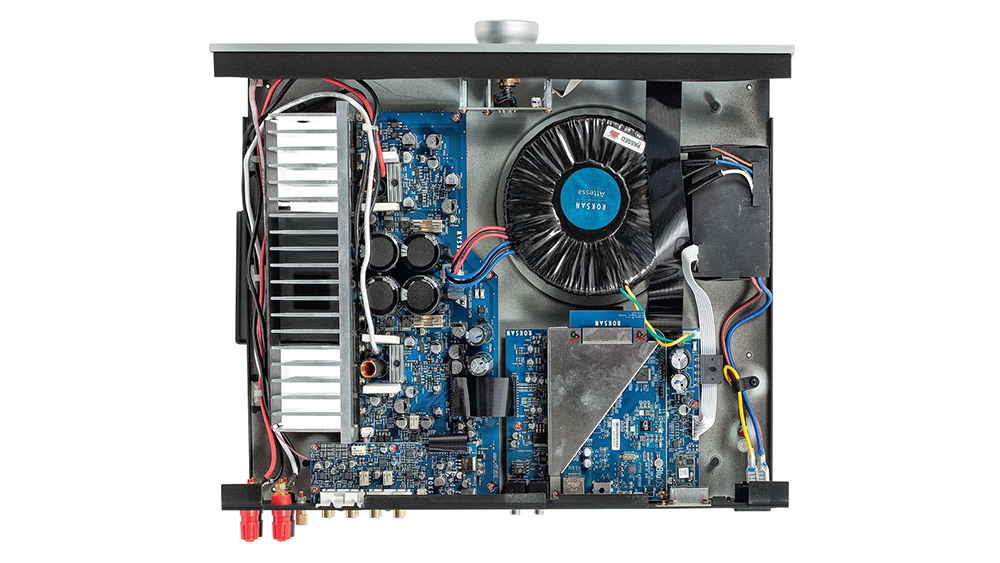
The Attessa delivered not only the sound of Weeks’ bass perfectly, but also that of the instruments played by the other performers on the album. Listen to the differences between Cornell Dupree and Phil Upchurch’s respective guitars (as well as to the differences in talent), for example. Listen also to Hathaway’s velvety-rich voice and his keyboard playing – both beautifully rendered by the Attessa. Thanks to this recording’s age (1972) and the fact it was recorded live, you’re hearing unadulterated sound, and it’s a great tester for hi-fi components. If you like soul, it’s an album that should also be in your music library. Rolling Stone once rated it one of the “greatest live albums of all time”, while MusicRadar lists it as one of its 10 “essential bass albums”.
There’s also plenty of amp-testing and speaker-testing bass on Foo Fighters’ latest: ‘But Here We Are’. Listening to Grohl’s frenetic – but precise – drumming on Rescue (and throughout), we couldn’t help but think it would be great if he could clone himself so that when the band was playing live, we could have one Dave Grohl on drums and the other out front singing lead. (Impossible, I know, you could never have another Dave Grohl!) This is the first Foo Fighters album since the death of Taylor Hawkins and it’s an absolutely fantastic listen; one that, we hate to say (given Hawkins’ absence), is the best FF has delivered for some time. There are more polished songs, both musically and lyrically, and even though there’s still that wall of guitars, the many music shape-shifts (the echo on the opening to Hearing Voices being one example) point to a more nuanced musical direction.
There is also lots of great bass on Ellie Goulding’s album ‘Higher Than Heaven’, but we used it as a test of the Attessa’s midrange and highs, plus its dynamic capabilities. The Attessa delivered her breathy, slightly nasal voice to perfection, along with the backing vocals. The cymbal taps in Cure For Love are crisp, with ride but no overhang. Fantastic. The swirling synth sounds are completely enveloping, as they should be. And then there’s the total lack of background noise. This is one very quiet amplifier.
We loved the way the Attessa was able to reveal the real instruments on Like A Saviour so instantaneously, which is no mean feat given the realism of modern synthesiser sounds. We would have liked to offer you a comparison between vinyl and CD for this album, but we weren't prepared to pay the $68 being asked for the former. Sorry.
But since we’ve mentioned vinyl, we need to tell you that when spinning our own (already paid-for) vinyl, the Attessa’s moving-magnet phono stage proved to be very nice indeed. It’s quiet, has a good overload margin, and its frequency response is as linear as that of the line-level inputs, which we established by A/B-ing our vinyl version of Billy Joel’s album ‘The Stranger’ against our CD version. Playing vinyl, the bass on Movin’ Out (Anthony’s Song) was powerful and extended. The cymbals hissed crisply, and when they were cut off, the cut-off was sharp – no overhang at all. The piano sound on the introduction to the title track was authentic and the whistling that follows was rendered just right too, without any sibilant edges. The piano chords on the intro to She’s Always A Woman were tonally accurate, and then when they’re arpeggiated later in the track, the balance between the individual notes was nothing short of exact.
Verdict
We like the look, we love all of the features, and we are entranced by the sound. We are impressed too by the retail price. Put that all together and we can tell you that the Roksan Attessa represents real value for money.
MORE:
Australian Hi-Fi Show Sydney 2024 – dates, venue and ticket info
What Hi-Fi? Awards: 26 Product of the Year winners announced for 2023!
Best hi-fi systems 2023: CD, vinyl and streaming music systems for the home
Australian Hi-Fi is one of What Hi-Fi?’s sister titles from Down Under and Australia’s longest-running and most successful hi-fi magazines, having been in continuous publication since 1969. Now edited by What Hi-Fi?'s Becky Roberts, every issue is packed with authoritative reviews of hi-fi equipment ranging from portables to state-of-the-art audiophile systems (and everything in between), information on new product launches, and ‘how-to’ articles to help you get the best quality sound for your home. Click here for more information about Australian Hi-Fi, including links to buy individual digital editions and details on how best to subscribe.
